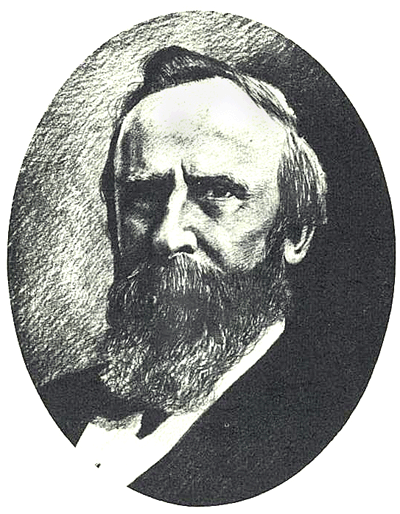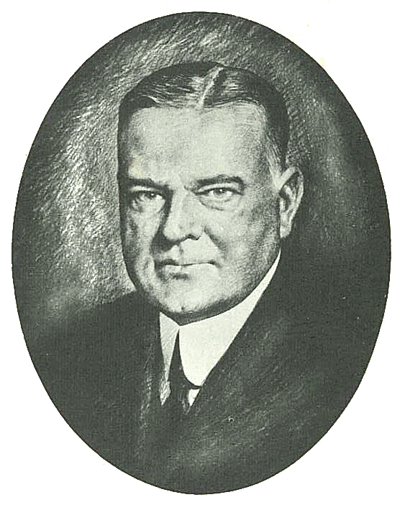Why it took 50 years for the telephone to land on the President’s desk
BY LEN SCHIEFER
Chief Copy Editor
We have become very used to technology seemingly bursting on the scene. In the electronics industry we talk of Moore’s Law, the principle that transistor density of an ASIC will double every 18 months due to advances in semiconductor technology.
What’s possible technologically translates into one product overtaking another, starting slowly and snowballing. The telegraph is invented (1844), the telephone (1876), the radio (1897-1917), the television (about 1900, but it’s a really complicated history),the computer (1940, but we can’t forget Charles Babbage and his girlfriend Ada, Lord Byron’s daughter, who, in the 19th century, respectively invented the “differential engine” and was the world’s first computer programmer), the Internet (1962), the Web (1945-1990s, another complicated history), the personal computer (1980), the cell phone (1973), and the GPS (1973). We can go further the Kindle (2006), the iPhone (2007) — and maybe the list will never stop. The history is fascinating, and I’ve included sources below, mostly links to timelines and other online articles. Also fascinating is how many of these inventions are being merged together, perhaps one day giving us not many devices, but, as some believes, only one to carry around.
However, near the beginning, progress was slow. I love Presidential history, so I started this article with wanting an answer to a seeminly simple, but to me baffling, question: Why did it take more than 50 years for the telephone to reach the President’s desk in the Oval Office? Ulysses S. Grant was U.S. President when, on March 10, 1876, three days after his patent was issued, Alexander Graham Bell succeeded in getting his telephone to work. (Telephone history is not simple, either, and I’ve included a link below to its rather complicated and fascinating history, some of which I include here.)

Rutherford B. Hayes, the 19th U.S. President, had the first telephone in the White House, in 1877.

Herbert Hoover, the 31st U.S. President, had the first telephone on his desk in the Uval Office, in 1929.
On May 10, 1877, President Rutherford B. Hayes had the White House’s first telephone installed in the mansion’s telegraph room. President Hayes embraced the new technology, though he rarely received phone calls. In fact, the Treasury Department possessed the only other direct phone line to the White House at that time. The White House phone number was “1.” Phone service throughout the country was in its infancy in 1877. It was not until a year later that the first telephone exchange was set up, in Connecticut. Undertaker Almon Strowger invented a durable and efficient switching system because he was losing business to other undertakers who paid switchboard operators to reroute calls meant for Stowager to them. However, it was not until 1919 that the Bell System started using Strowger’s automatic switch.
James Garfield succeeded Hayes as President in 1881. The telephone wasn’t so much used by him as on him. He was assassinated on July 2, 1881, and lingered until September 19, 1881, when he died. Bell’s telephone was used to find the bullet lodged inside Garfield’d chest. X-rays had not been invented yet so the only way to determine the exact location of the bullet was to do a manual probe with instruments. If they were to make continued probes to locate the bullet, it increased the risk of infection.
Simon Newcomb of Baltimore had been experimenting with running electricity through wire coils and the effect metal had when placed near the coils. He had found that when metal was placed near the coils filled with electricity that a faint hum could be heard at that point in the coil. The problem was that the hum was so faint that is was very difficult to hear. He suggested that he might be able to perfect his invention so that it could be used on the President but, unfortunately, he though that the perfection of the apparatus would take too long.
Bell read about Newcomb’s experiments and offered to assist the inventor, thinking that his telephone was the answer to the amplification. His telephone amplified sound made through wire! To make a long story short, however, the resulting machine worked on finding metal and bullets in everyone else but President Garfield.
Chester Arthur, who became President upon Garfield’s death, was such a private person that he had all his personal records destroyed when he left the Presidency. I don’t know how he used the telephone.
The President talked on the telephone from a booth outside his executive office from near the beginning until 1929. Grover Cleveland didn’t like other people talking for him. He even answered his own telephone at the White House.
Electricity was installed in the White House during Benjamin Harrison’s term and, like many people at that time, he was afraid of it. No word how he used the telephone.
William McKinley was the first President to use the telephone while campaigning.
Theodore Roosevelt, William Howard Taft, Woodrow Wilson, and Warren Harding did nothing so remarkable with the telephone that their use is recorded prominently on the Web or in trivia books.
Calvin Coolidge, so taciturn that he had the nickname “Silent Cal,” refused to use the telephone while he was in office.
The telephone developed and became more useful and accepted over all these years. The Bell company adopted the automatic telephone switch, for instance. This history also partially explains why it took 50 years until President Herbert Hoover had the first telephone line installed at the president s desk in the Oval Office.
So although telephones had been used in the White House for many years, the instrument did not reach the president’s desk until the Hoover administration at the start of the Great Depression.
The Hoover Library explains, “In 1929, when the Executive Offices were remodeled the historic one-position switchboard which had served for so many years was retired from service and a new two-position switchboard, especially built to meet the President’s needs, was installed. The number of stations was materially increased in addition to many special circuits for the use of the President. It was at this time a telephone was installed on the President’s desk for the first time.”
Technological advancements are faster now. Presiden Barack Obama has gotten the use of his cell phone and laptop now, after much wrangling about security and legal matters. It took a while, but it wasn’t 50 years. ■
Sources:
http://www.xilinx.com/publications/archives/xcell/Xcell42.pdf
http://inventors.about.com/od/tstartinventions/a/Television_Time_2.htm
http://library.thinkquest.org/04oct/02001/origin.htm
http://www.computerhistory.org/internet_history/
http://inventors.about.com/library/weekly/aa031599.htm
http://www.w3.org/History.html
http://ireaderreview.com/2008/11/17/amazon-kindle-1-year-anniversary-a-kindle-history-of-sorts/
http://www.webbconsult.com/1920.html
http://www.privateline.com/TelephoneHistory2A/Telehistory2A.htm
http://www.historybuff.com/library/refgarfield.html
http://www.easyfunschool.com/GroverCleveland.html
Louis Phillips, Ask Me Anything About the Presidents (New York: Avon Books, 1994), p. 54.
The images of the Presidents, from Washington to Eisenhower, in this series are from a little book I got from my mom when I was less than 10 years old. Simply titled Presidents of the United States , this book began my interest in the Presidents. I think it came from an insurance company, but I can't find a publisher listed in its pages. See http://www2.electronicproducts.com/How_I_got_interested_in_Presidential_history-article-fals_president_start_aug2012-html.aspx ■
Advertisement
Learn more about Electronic Products Magazine





